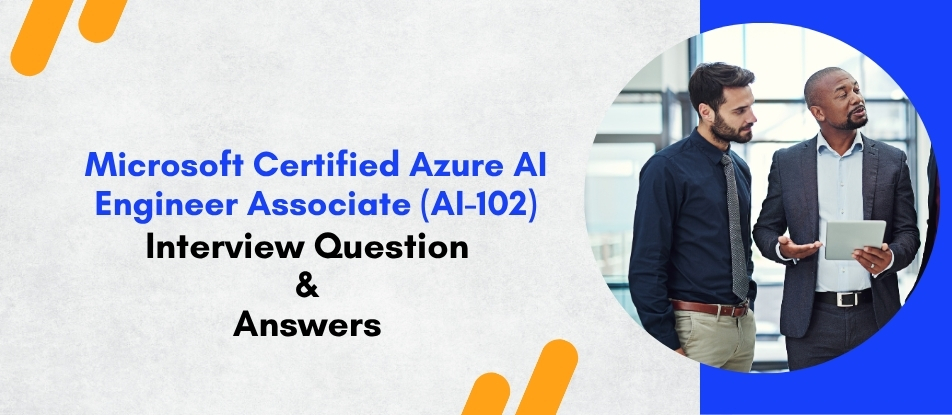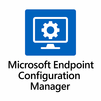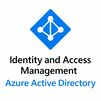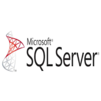
The Microsoft Certified Azure AI Engineer Associate (AI-102) course provides in-depth training on developing, managing, and deploying advanced AI solutions using Microsoft Azure. Learners gain hands-on experience with Azure Cognitive Services, Azure Bot Service, and Azure Machine Learning to build intelligent applications featuring speech, vision, and language capabilities. The program also emphasizes responsible AI principles, MLOps integration, and real-world project implementation, empowering professionals to become certified Azure AI Engineers and excel in designing enterprise-ready AI solutions.
Microsoft Certified Azure AI Engineer Associate AI-102 Training Interview Questions Answers - For Intermediate
1. What are Azure Cognitive Service Containers, and why are they used?
Azure Cognitive Service Containers allow AI services to be deployed locally or in private cloud environments using Docker containers. This ensures data residency, lower latency, and offline processing capabilities. They are ideal for organizations with strict compliance needs or limited internet connectivity.
2. How does Azure Form Recognizer help automate document processing?
Azure Form Recognizer uses machine learning to extract key-value pairs, tables, and text from structured or unstructured documents such as invoices, receipts, and forms. It reduces manual data entry by learning from sample documents and allows custom model training for domain-specific document layouts.
3. What are the differences between prebuilt and custom text analytics models?
Prebuilt text analytics models offer ready-to-use capabilities such as sentiment analysis, key phrase extraction, and entity recognition, suitable for general-purpose use cases. Custom models, however, can be trained on domain-specific data to identify entities or sentiments unique to an organization’s business context.
4. What is Azure Translator, and how can it be integrated into applications?
Azure Translator is a cloud-based service that provides real-time text translation across multiple languages. It can be integrated via REST APIs or SDKs into websites, mobile apps, and chatbots. Developers can also use custom translation models through Custom Translator for specialized industry vocabulary.
5. How does Azure Face API enhance security and personalization?
Azure Face API enables facial detection, verification, and recognition in images or videos. It can authenticate users for secure access, detect emotions for sentiment analysis, and personalize experiences such as adjusting content based on user reactions. It supports privacy controls and complies with data protection laws.
6. What are QnA Maker and Azure Language Studio’s role in knowledge-based AI?
QnA Maker and Azure Language Studio allow building conversational knowledge bases by converting structured or unstructured text (like FAQs or manuals) into interactive Q&A bots. Users can query the knowledge base using natural language, and the service returns precise, context-aware responses.
7. Explain the importance of endpoint management in Azure AI services.
Endpoint management is critical for monitoring usage, applying version control, and managing authentication keys. Azure allows developers to manage endpoints via the Azure Portal or SDKs, ensuring that models are securely accessible, updated, and versioned without disrupting client applications.
8. What is the difference between training and inference in Azure AI workloads?
Training refers to building or fine-tuning a machine learning model using data, while inference is the process of using that trained model to make predictions. In Azure, training typically happens in Azure Machine Learning, whereas inference occurs via deployed REST endpoints or integrated Cognitive Services.
9. How can AI Engineers ensure scalability for AI solutions on Azure?
Scalability is achieved through autoscaling mechanisms in Azure Kubernetes Service (AKS), App Service Plans, or Virtual Machine Scale Sets. Engineers can use load balancers, caching, and distributed architecture to handle variable workloads while maintaining consistent performance and uptime.
10. What are the advantages of using Azure Cognitive Services SDKs over REST APIs?
SDKs simplify integration by providing language-specific methods, error handling, and configuration options, reducing manual coding effort. While REST APIs offer flexibility and platform independence, SDKs in languages like Python, C#, or Java streamline authentication and interaction with Azure AI services.
11. What is model versioning, and why is it important in Azure AI projects?
Model versioning ensures that updates or improvements to AI models do not disrupt existing applications. Azure Machine Learning supports version control through its model registry, enabling developers to track changes, rollback if needed, and manage multiple model versions efficiently during deployment.
12. How does Azure support data labeling for AI model training?
Azure Machine Learning provides Data Labeling Projects that allow teams to annotate datasets for supervised learning tasks like image classification or object detection. It supports manual and semi-automated labeling workflows, enabling more accurate model training through curated, high-quality data.
13. Explain the concept of AI enrichment pipelines in Azure Cognitive Search.
AI enrichment pipelines process unstructured content using built-in AI skills such as OCR, language detection, and sentiment analysis. These enrichments convert unstructured data into structured fields, making it searchable and analyzable. Custom skills can also be integrated to extend the enrichment process.
14. What is the difference between Cognitive Services and Azure Machine Learning?
Cognitive Services provides pre-built AI capabilities through APIs that can be easily integrated into applications without needing data science expertise. Azure Machine Learning, on the other hand, offers a complete environment to build, train, and deploy custom machine learning models for complex or domain-specific problems.
15. What performance metrics should be monitored in Azure AI solutions?
Key performance metrics include latency, throughput, accuracy, response time, and error rates. Additionally, monitoring resource utilization (CPU, GPU, and memory) helps identify performance bottlenecks. Azure Monitor and Application Insights provide dashboards for analyzing these metrics to maintain optimal performance and reliability.
Microsoft Certified Azure AI Engineer Associate AI-102 Training Interview Questions Answers - For Advanced
1. How can Azure OpenAI Service be integrated with Cognitive Services for enterprise AI applications?
Integration between Azure OpenAI Service and Azure Cognitive Services enables enterprises to create intelligent, context-aware applications combining generative and analytical AI. The OpenAI Service provides access to models like GPT, Codex, and DALL·E through secure Azure endpoints, while Cognitive Services deliver specialized capabilities such as speech recognition, computer vision, and text analytics. For instance, a financial institution could use Cognitive Services to extract structured data from documents using Form Recognizer, then feed that data into GPT for narrative report generation. The integration can be achieved through REST APIs or orchestrated via Azure Logic Apps or Functions for automation. Security and compliance are ensured through Azure Active Directory authentication and data encryption. This hybrid design allows companies to extend foundational models with domain knowledge, achieving highly specialized business outcomes.
2. Describe how vector search enhances information retrieval in Azure Cognitive Search.
Vector search transforms traditional keyword-based search into semantic search by representing text and documents as high-dimensional embeddings. Azure Cognitive Search now integrates vector-based search capabilities using embeddings generated from models such as OpenAI’s text-embedding-ada-002. When a query is received, it is converted into a vector representation and compared to indexed document vectors using cosine similarity. This allows the retrieval of semantically related documents even when exact keywords do not match. For example, a query like “renewable power generation” would retrieve results about “solar energy” or “hydropower.” The use of hybrid search, which combines vector and keyword search, improves relevance and recall. By pairing this with Cognitive Skillsets, organizations can build knowledge mining systems capable of deep contextual understanding across unstructured content.
3. Explain the process of fine-tuning a large language model in Azure Machine Learning.
Fine-tuning a large language model in Azure Machine Learning involves adapting a pre-trained transformer-based model to a specific task or dataset. The workflow starts with data preparation, ensuring the dataset is clean, balanced, and tokenized appropriately. Using the Azure ML SDK or CLI, a fine-tuning experiment is created within a managed compute environment that provides GPU resources. Hyperparameters like learning rate, batch size, and number of epochs are optimized using automated ML or Bayesian optimization techniques. The trained model is then versioned and stored in the Azure ML model registry. After validation through metrics like perplexity and F1-score, the fine-tuned model is deployed as a REST endpoint for inference. Monitoring tools within Azure ML track drift and retraining triggers, ensuring continuous performance improvements.
4. How can Azure AI be used to build a multilingual voice-enabled virtual assistant?
A multilingual voice-enabled assistant can be developed by combining Azure Speech Services, Translator, and the Bot Framework. Speech-to-Text transcribes user input in real time, and the Translator service converts the speech into a target language for processing. The Azure Language Service, previously known as LUIS, interprets user intent and entities from the translated text. The bot logic, hosted within Azure Bot Service, formulates a response which is then translated back to the user’s preferred language and synthesized into natural speech using Text-to-Speech. The architecture can handle multiple languages simultaneously through cognitive containers or custom translation models. To improve personalization, the system may incorporate user profile data from Azure Cosmos DB and integrate with Power Virtual Agents for dynamic conversation flow.
5. Discuss how Azure Machine Learning pipelines enable MLOps automation for AI lifecycle management.
Azure Machine Learning pipelines support continuous integration and continuous delivery of machine learning workflows, enabling MLOps automation. A typical pipeline includes data ingestion, preprocessing, feature engineering, model training, evaluation, and deployment stages. Each component is versioned and reusable, ensuring consistent environments across development and production. Pipelines are triggered by Azure DevOps or GitHub Actions when new data or code changes occur. The outputs are logged in Azure ML’s experiment tracking system, maintaining auditability. Deployment can be automated using Azure Kubernetes Service, where containerized models are managed via REST endpoints. This setup ensures scalability, reproducibility, and governance across the AI lifecycle, minimizing manual intervention and human error.
6. How can data drift and model drift be detected and mitigated in Azure AI systems?
Data drift and model drift refer to changes in data distributions or model performance over time, leading to reduced accuracy. Azure Machine Learning offers the Data Drift Monitor and Model Drift Detection capabilities to continuously compare incoming production data against training datasets. Statistical techniques such as population stability index (PSI) and Kolmogorov-Smirnov tests detect deviations in feature distributions. When drift is detected, Azure triggers alerts or automated retraining workflows. Mitigation strategies include periodic retraining, adaptive learning, and incorporating new representative samples. The entire process can be managed through Azure Monitor and ML pipelines, ensuring AI models remain robust and aligned with evolving data trends.
7. What approaches can be used to ensure fairness in AI models deployed via Azure Machine Learning?
Fairness in AI is ensured through bias detection, mitigation, and transparency practices. Azure Machine Learning integrates with the Fairlearn toolkit, which provides visual reports of performance metrics across sensitive groups like gender or ethnicity. Developers can apply mitigation algorithms such as reweighing or equalized odds to adjust model outputs. Interpretability is enhanced using tools like SHAP and LIME to explain predictions. Policies can be enforced via Responsible AI dashboards that automatically generate fairness assessments before deployment. Governance frameworks, combined with Azure Policy and compliance logging, allow organizations to track fairness metrics and demonstrate accountability. This integrated approach supports ethical AI design and regulatory compliance.
8. How can Azure Cognitive Services be deployed in air-gapped or disconnected environments?
Azure Cognitive Services can be deployed in air-gapped or private environments using containerized deployments. Microsoft provides Docker images for various services like Computer Vision, Text Analytics, and Form Recognizer. These containers are downloaded from Azure Container Registry and run on local infrastructure, ensuring data never leaves the organization’s network. Configuration is achieved using environment variables that manage keys, logging, and billing. Offline deployments are common in defense, manufacturing, and healthcare industries where data privacy is critical. Periodic synchronization with Azure ensures compliance with licensing and updates. The container model provides flexibility, scalability, and compliance for organizations with strict regulatory requirements.
9. Explain how Azure Arc facilitates hybrid AI and ML deployments.
Azure Arc extends Azure management and services to on-premises, edge, and multi-cloud environments. For AI and ML workloads, Arc-enabled Machine Learning allows deploying and managing models outside Azure while maintaining centralized governance. Models trained in Azure can be registered and deployed to Arc-connected Kubernetes clusters using the same tooling. Data scientists can use Azure ML Studio while IT teams manage infrastructure locally. Arc ensures compliance with data sovereignty laws, reduces latency for edge inference, and integrates monitoring through Azure Monitor. This hybrid approach provides the flexibility to train in the cloud and deploy anywhere, supporting diverse industry use cases like manufacturing quality inspection or autonomous systems.
10. How can AI models in Azure be secured against adversarial attacks?
Securing AI models requires a multi-layered defense strategy encompassing model robustness, data integrity, and access control. Azure supports secure model storage through encryption at rest and in transit. Differential privacy techniques protect sensitive data during training. To counter adversarial attacks, defensive distillation and input validation are implemented to prevent malicious perturbations. Azure’s Confidential Computing environment ensures that models execute in secure enclaves, isolating them from unauthorized access. Network-level protections such as Private Endpoints restrict external API exposure, and audit trails track inference requests. Regular vulnerability assessments using Microsoft Defender for Cloud provide proactive security insights, ensuring AI systems remain resilient to manipulation.
11. What strategies can optimize cost efficiency in Azure AI workloads?
Cost optimization involves selecting appropriate compute resources, scaling dynamically, and leveraging spot instances or low-priority VMs. Azure Machine Learning allows choosing between CPU, GPU, or FPGA instances depending on model complexity. Autoscaling in Azure Kubernetes Service adjusts node counts based on workload demand, preventing over-provisioning. Data lifecycle management policies in Blob Storage help move inactive data to cooler tiers. For long-running experiments, distributed training can reduce total training time, lowering resource costs. Monitoring with Cost Management and Application Insights identifies inefficient components. Adopting Dev/Test pricing tiers and Reserved Instances for predictable workloads can further reduce overall expenditure while maintaining performance.
12. How can Explainable AI (XAI) be implemented in Azure-based AI applications?
Explainable AI provides insights into how models arrive at their predictions. Azure Machine Learning integrates with libraries like InterpretML and SHAP to generate feature importance scores and local explanations. Global explainers highlight which features most influence the overall model, while local explainers analyze specific predictions. These insights are visualized within Azure ML Studio, enabling stakeholders to understand and trust AI decisions. Explanations can be exported as JSON artifacts and integrated into web dashboards for compliance. In regulated industries, explainability supports auditability and legal defensibility. Combining interpretability with Responsible AI dashboards creates transparent systems that align with ethical AI standards.
13. Describe a real-world use case of Azure Cognitive Services in healthcare.
In healthcare, Azure Cognitive Services can be used for intelligent medical documentation. For example, Speech-to-Text can transcribe doctor-patient consultations in real time, while Text Analytics extracts clinical entities like symptoms, diagnoses, and medications. Computer Vision processes radiology images to identify abnormalities, and Cognitive Search organizes medical records into searchable knowledge bases. All data is processed in compliance with HIPAA and GDPR standards. Integrating these services with FHIR-compliant APIs enables interoperability with electronic health record systems. The outcome is reduced administrative workload, faster diagnosis, and improved patient care through data-driven decision-making.
14. How does Azure support continuous learning and retraining of deployed AI models?
Azure Machine Learning enables continuous learning by automating retraining workflows through triggers in Azure Data Factory or Event Grid. When new data is ingested, pipelines automatically retrain models using predefined configurations. Performance metrics such as accuracy and recall are compared to previous versions, and the best-performing model is promoted to production. Model drift detection systems in Azure Monitor can trigger retraining when performance degrades beyond a set threshold. Continuous deployment is managed via DevOps integration, ensuring minimal downtime. This automation establishes a self-improving AI system that adapts to evolving data without manual intervention.
15. What are the benefits of using Azure Synapse Analytics with Azure AI for large-scale predictive modeling?
Azure Synapse Analytics provides a unified environment for big data processing and integration with Azure AI for predictive modeling. It allows seamless access to structured and unstructured data stored in Data Lakes or SQL pools. Data can be preprocessed using serverless queries and fed directly into Azure Machine Learning for training at scale. Synapse pipelines can orchestrate ETL and AI workflows, ensuring consistency across data operations. The tight integration reduces data movement overhead and improves latency. Predictive models can use historical patterns to forecast business outcomes like demand, pricing, or equipment failure. This synergy empowers enterprises to operationalize analytics with intelligence embedded directly within their data ecosystems.
Course Schedule
| Dec, 2025 | Weekdays | Mon-Fri | Enquire Now |
| Weekend | Sat-Sun | Enquire Now | |
| Jan, 2026 | Weekdays | Mon-Fri | Enquire Now |
| Weekend | Sat-Sun | Enquire Now |
Related Courses
Related Articles
- Get Advanced MS Excel 2016 Course with Certificate
- Most Trending Primavera Interview Questions & Answers
- How Salesforce Financial Services Cloud is Redefining Wealth Management?
- Strengthen Access Control Systems with Smart PingDirectory Administration
- Top 10 Questions and Answers for Piping Interview
Related Interview
Related FAQ's
- Instructor-led Live Online Interactive Training
- Project Based Customized Learning
- Fast Track Training Program
- Self-paced learning
- In one-on-one training, you have the flexibility to choose the days, timings, and duration according to your preferences.
- We create a personalized training calendar based on your chosen schedule.
- Complete Live Online Interactive Training of the Course
- After Training Recorded Videos
- Session-wise Learning Material and notes for lifetime
- Practical & Assignments exercises
- Global Course Completion Certificate
- 24x7 after Training Support









 Join our Live Instructor-Led online classes delivered by industry experts
Join our Live Instructor-Led online classes delivered by industry experts